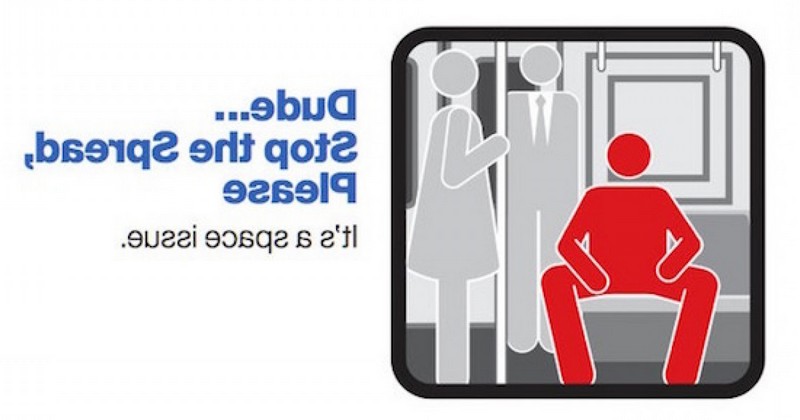Manspreading: do men need to take up more space when sitting?

It is very common among men to spread their legs wide to take up as much space as possible. Why?
The term "manspreading" is relatively new., and in fact did not become popular until well into 2014, according to Google search data. However, the problem to which it refers has been known for years: a certain tendency on the part of many men to occupy much more than necessary on public transport seats by dint of opening or stretching their legs wide.
In fact, back in the 1970s a feminist photographer named Marianne Wex set out to document this phenomenon, and the result was a well-documented book entitled Let's Take Back Our Space: Female and Male Language as a Result of Patriarchal Structures.
As far as we know, manspreading is very common, so much so that at least one case can be found in every train carriage. In a recent study of a sample of more than 5000 people using public transport on different days of the week and times of the day, more than a quarter of men (26%) engaged in manspreading, while this percentage fell to less than 5%. percentage dropped to less than 5% in the case of women..
Moreover, the same research concluded that even those men who stretched their legs in the absence of other passengers sitting next to them tended not to correct their posture as the carriage became more crowded and empty seats disappeared.
Interestingly, moreover, the age group in which men were most likely to engage in manspreading was the 30s to 30s, and the age group in which men were most likely to engage in manspreading was the 30s to 30s. between the ages of 30 and 49.. At younger ages the percentage was somewhat lower, and significantly lower in age groups of people over 50.
Evidently, many of the proposals that attempt to offer an explanation about manspreading have a more or less clear political background. For example, as we have seen, feminist authors such as Marianne Wex suggest that manspreading could be another of those little privileges reserved for men; in this case, that of being able toin this case, that of being able to claim more space for themselves in certain situations, for their own comfort and to the detriment of the well-being of others.
Thus, this behavior would be both a way of expressing their power, which, from a feminist point of view, would be linked to patriarchy. linked to patriarchyand a privilege that allows them to feel more comfortable.
On the other hand, entities critical of feminism, such as the Canadian Association for Equality (an organization linked to the Men's Rights Movement) have gone so far as to argue that it is potentially painful for men to sit with their legs parallel.
In short, there is still no clear cause to explain the phenomenon of manspreading, although it is known to exist, it is very present in the daily lives of those who use public transport, and that it is significantly widespread.and that it is significantly widespread among men.
Now, whether it is something caused only by the biology of the bodies themselves or by cultural norms and behaviors learned over generations is something we will probably know more about in a few years, as more research is done on this newly christened behavior. At its origin, we will probably find a mixture of biology and a mixture of biology and cultural learning, standardized over centuries and normalized over centuries and centuries. At the end of the day, it is very difficult to find a clear space between sex and gender.
(Updated at Apr 13 / 2024)